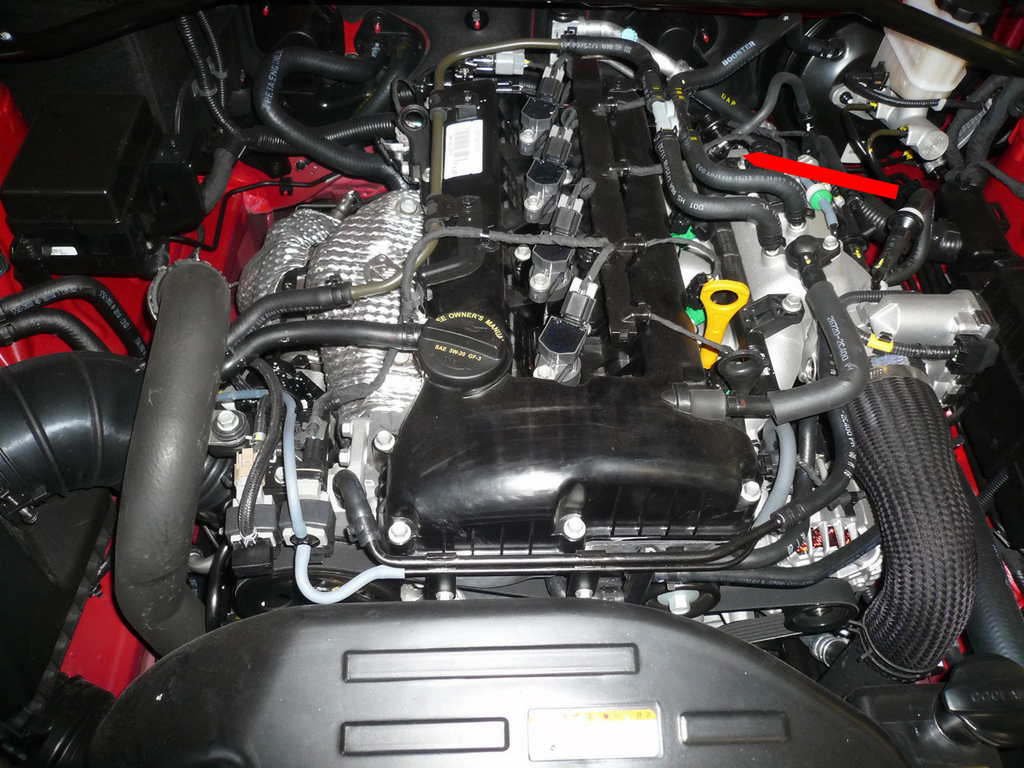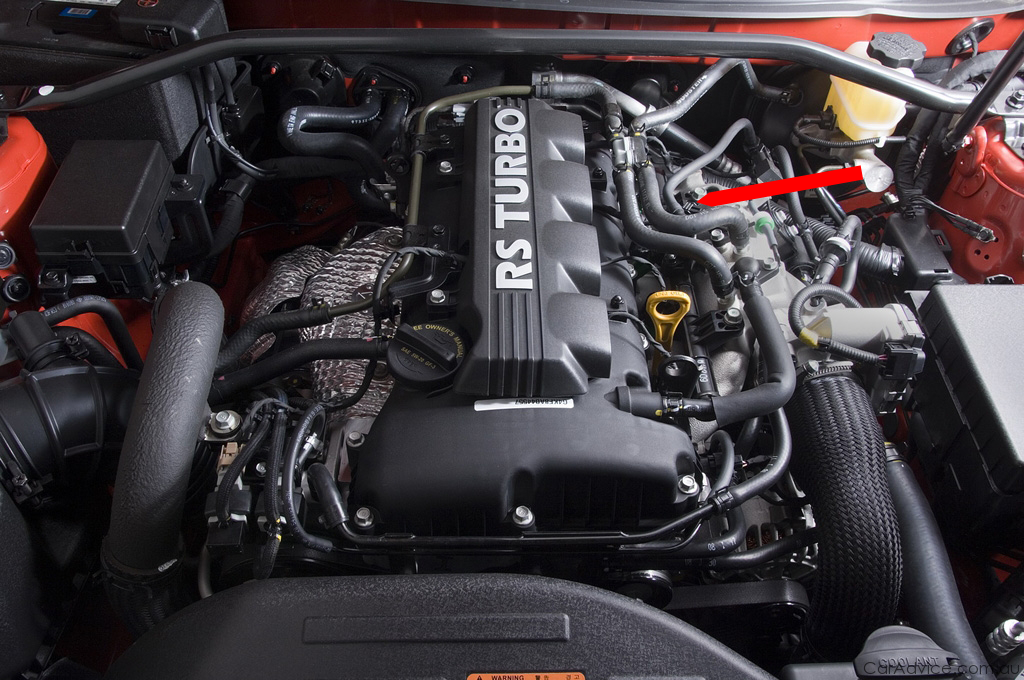Beyond Redline's Fire Explained
As many of you know our Genesis Coupe had burned to the ground approximately 7 months ago. Me being the technical guy I am had to find an answer to why the fire started and fix what ever the cause of the fire was so that it wouldn't happen to us or anyone else again.
We believe we have found the cause of the fire, and believe that after reviewing our new car carefully that this may be a potential safety issue to people that want to upgrade their car or drive in an aggressive manner.
After the fire started, I had tried to extinguish it with multiple fire extinguishers, and was unsuccessful. However it was clear that the source of the fire was the drivers side shock tower area. This was also where the highest of the heat was concentrated.
I had some theories, but it wasn't until we received our new car, Project Phoenix, that I was able to investigate further. The first thing I saw was the fuel line going between the steel line and the rail was plastic. Although this isn't all that uncommon on newer cars, there is a problem with this one. In my opinion the line was routed too direct to the motor and didn't allow proper slack to exist if the engine was moved in an extreme position towards the passenger side. This is evident by just walking up to the car and grabbing a hold of it and feeling the slack.
The next thing I wanted to try was to actually simulate the engine moving much like it would when you would do a WOT shift. I was amazed at how much the engine moved on the mounts, and also how much the plastic line stretched. Now keep in mind this is with a completely stock car (with an air filter) and just with a little brake torque applied. This is not a full boost.
The third piece to the puzzle is the pictures I have found of Gencoupe engine bay shots. Below are two pictures of two different gencoupe engines, and both have different fuel lines. Keep in mind this vehicle has only had 1 model year, and this engine has never been used in any other vehicle. Now I would think the one with the loop towards the hood (top pic)would be way more effective at dealing with motor mount flex than the other. Our black car had the more direct routed one (bottom pic)as well as Project Phoenix. I am not quite sure why the change was made, but I have a feeling Hyundai may know something.
You can draw your own conclusions, but I know our car will have one of our fuel line kits installed from here on out
FUEL LINE KIT
![Image]()
![Image]()
As many of you know our Genesis Coupe had burned to the ground approximately 7 months ago. Me being the technical guy I am had to find an answer to why the fire started and fix what ever the cause of the fire was so that it wouldn't happen to us or anyone else again.
We believe we have found the cause of the fire, and believe that after reviewing our new car carefully that this may be a potential safety issue to people that want to upgrade their car or drive in an aggressive manner.
After the fire started, I had tried to extinguish it with multiple fire extinguishers, and was unsuccessful. However it was clear that the source of the fire was the drivers side shock tower area. This was also where the highest of the heat was concentrated.
I had some theories, but it wasn't until we received our new car, Project Phoenix, that I was able to investigate further. The first thing I saw was the fuel line going between the steel line and the rail was plastic. Although this isn't all that uncommon on newer cars, there is a problem with this one. In my opinion the line was routed too direct to the motor and didn't allow proper slack to exist if the engine was moved in an extreme position towards the passenger side. This is evident by just walking up to the car and grabbing a hold of it and feeling the slack.
The next thing I wanted to try was to actually simulate the engine moving much like it would when you would do a WOT shift. I was amazed at how much the engine moved on the mounts, and also how much the plastic line stretched. Now keep in mind this is with a completely stock car (with an air filter) and just with a little brake torque applied. This is not a full boost.
The third piece to the puzzle is the pictures I have found of Gencoupe engine bay shots. Below are two pictures of two different gencoupe engines, and both have different fuel lines. Keep in mind this vehicle has only had 1 model year, and this engine has never been used in any other vehicle. Now I would think the one with the loop towards the hood (top pic)would be way more effective at dealing with motor mount flex than the other. Our black car had the more direct routed one (bottom pic)as well as Project Phoenix. I am not quite sure why the change was made, but I have a feeling Hyundai may know something.
You can draw your own conclusions, but I know our car will have one of our fuel line kits installed from here on out
FUEL LINE KIT






